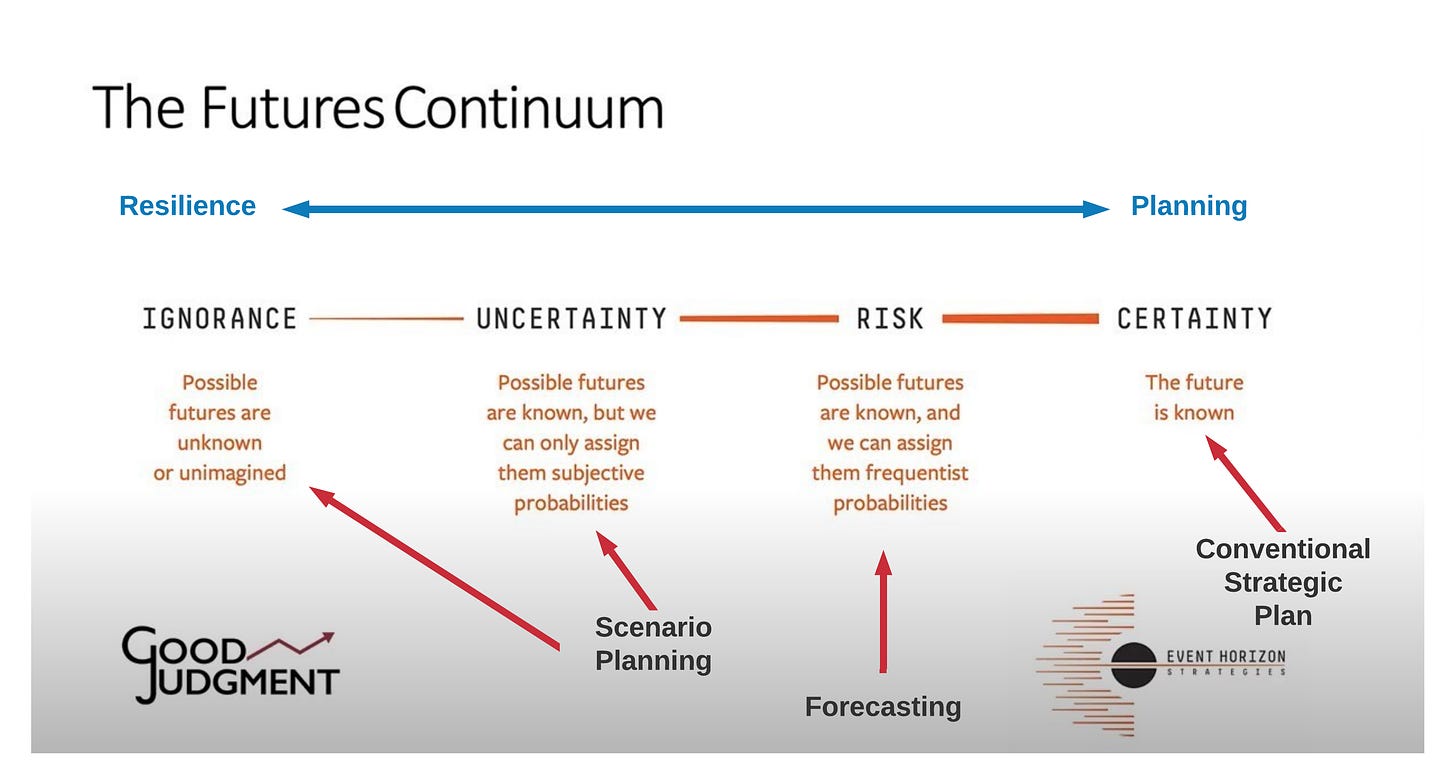Foresight and Forecasting V Designing for Uncertainty
What is the balance between trying to understand what the future might bring and building organisations and networks that can react to change strategically
Last week I watched a webinar from Good Judgement on the Future of Foresight as I was unable to attend the live event. The webinar was a follow on from an article that Philip Tetlock and Peter Scoblic published in Foreign Affairs entitled A Better Crystal Ball The Right Way to Think About the Future (registration required).
The article and the webinar were basically around the differences between scenario planning approaches and forecasting approaches and how both schools of thought tend to disparage each other. As a generalisation scenario planners think forecasting specific numbers and probabilities is a fool’s errand and forecasters think scenarios are too vague to be useful for policy and decision making.
The premise of the article and the webinar are that you can combine the two approaches in specific circumstances to create an overall strong approach.
The system that is proposed mirrors an approach that I have been using for a few years now but also adds strength to that approach. My process has been:
- Understand possible future landscapes by using Wardley Maps and Scenario Planning to create multiple possible pictures of the future.
- Wargame inside those scenarios to look at possible strategy.
- Extract from the scenarios signposts that will inform you if the picture you have imagined is happening in the real world.
- Institutionalise the process by creating formal reviews of the signposts at regular board meetings or leadership meetings of the organisation.
The strength that the Tetlock/Scoblic approach adds is the use of probability assessments of the signposts using super forecaster skills. This is especially useful where your strategy requires that you need to act well in advance of the future coming to reality.
I think that this is a great advance for thinking about these issues but misses an important third component.
To illustrate the overall approach Good Judgment presented the following slide:
Which I have then annotated as follows:
The missing third element is the building of resilient organisations that can flex and change as unanticipated stuff happens. As we move from the right to the left in the Good Judgement Futures Continuum things become more and more uncertain. As things become more uncertain the value of planning falls and the value of organisations and networks that can respond to change rises.
I have written about an example of this in Is radical emergent strategy from the edge the future of foresight and strategy?
The answer to the question in the title of that article is that planning, forecasting, scenario planning, and building resilient organisations are all useful. The relative value of each depends on the organisation in question and the domain in which they operate.
The proposal from Tetlock and Scoblic strengthens the use of scenario planning and forecasting within the group of tools we should be using.
If you want to discuss how to apply these approaches to your strategy and your strategic thinking then you can contact me directly


